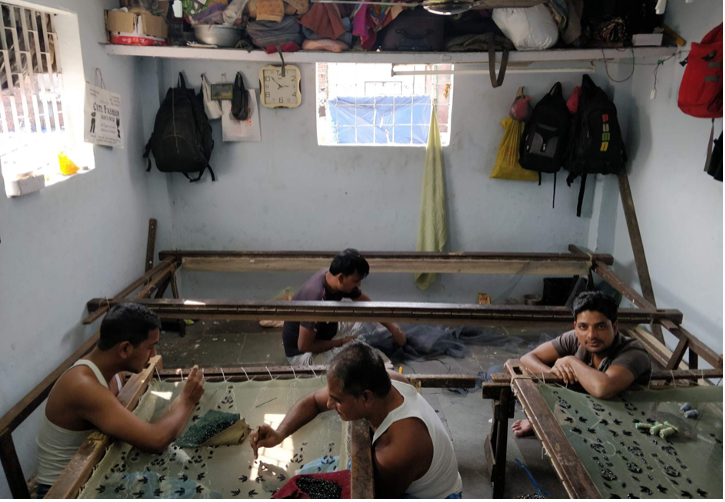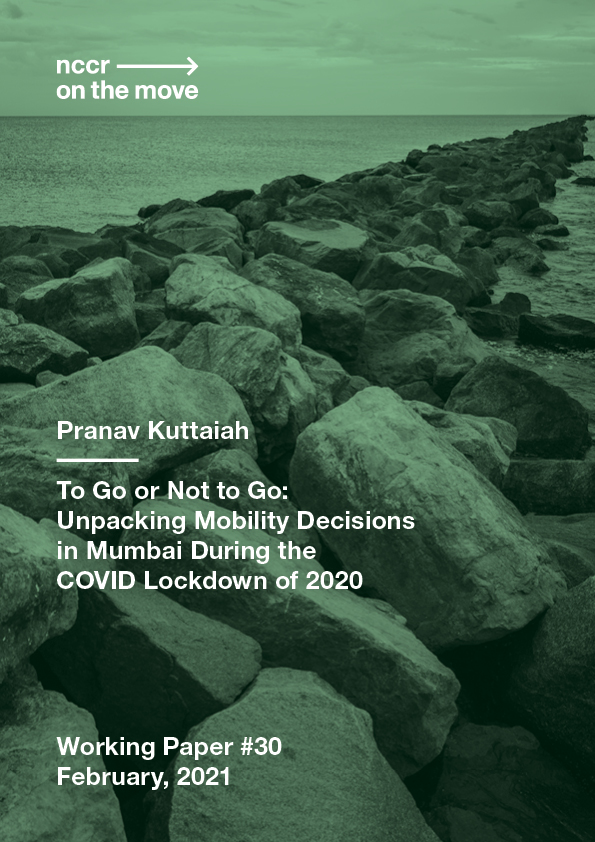COVID-19 and Internal Migration: Lessons from India

While the discourse on migration often focuses mainly on international borders and refugees, the first wave of the COVID-19 pandemic brought internal migration to the fore. Such was the case in India where housing and employment status, caste, religion, gender and ethnicity seemed to dictate how city residents chose to spend the lockdown period – whether they were forced to stay or to leave, and how they organized their lives in the often hostile and precarious urban environments.
In the year 2020, as the pandemic began to wreak unprecedented havoc on humanity, images flooded the mediascape depicting some of its worst effects. Among these, one stood out in particular. Photos of migrants in India abandoning cities and walking great distances home with their possessions in hand came to be the human face of the tragedies caused by the lockdowns. This spotlight brought internal migration into national and international prominence. Long since relegated to a secondary status within the discourses on migration that often focus on international borders, climate change and refugees – the massive socio-economic questions of rural-urban linkages, human settlement patterns, emerging mobilities, and hostile labor and housing markets came to the fore.
This emotive story, however, was based on an assumption: that the internal ‘migrant’ was somehow a self-evident category to describe those whose physical labor sustained major metropolises in India. The media had begun to describe the whole situation as a ‘migrant crisis’ – but this coinage seemed to obscure more than it did reveal. In reality, the positionality of city residents varied massively in terms of housing, employment, access to credit, political clientelism and family structure – factors which are themselves circumscribed in India by caste, religion, gender and ethnicity. The access to various options thus structured a number of choices that city residents chose to make when the lockdown was announced – whether to stay or to leave, how to organize their lives, arrange for food and money, who to ask for help and so on.
Mumbai’s Lockdown Experience: Key Observations
While a large number of workers – particularly those who migrate to the city seasonally for work in the construction sector – did indeed try to leave the city immediately, many others chose to stay. This happened for numerous reasons. First, the original announcement stated that the lockdown would take 21 days, a period most felt they would be able to survive by dipping into their savings. Second, longer-term workers had more tenuous links with their native villages and were seen in many cases to be carriers of the infection and told not to come home. Finally, most long-term workers living in “informal” rented settlements, and as such had large sums of money in security deposits with their landlords that they feared losing if they left the city.
Garment Workers at home/work space in Dhorwada, Dharavi

Source: Author Pranav Kuttaiah (February 2021)
As the lockdown progressed, however, the workers who stayed found themselves in increasingly precarious situations – with eroded savings, lack of options to eat, a punitive state, and tense negotiations with their landlords. This culminated in May of 2020 when in the first phase of the “unlock” announced by the government, another major exodus from cities took place using rail lines, buses, trucks and even flights. This becomes apparent in a working paper based on qualitative research and descriptive detail to unpack some of the nuances of this decision-making process, examining the conversations and ad-hoc survival strategies that emerged during the first lockdown in the city of Mumbai.
Based on the conclusions of the working paper, one can make the following observations: the status and relationship between landlord and tenant within the “informal” settlement was a key axis along which migratory decisions were negotiated. Moreover, the unforeseen gendered fallouts of police repression structured certain people’s desperation to leave. Finally, the collective psychology of fear and safety worked more along the lines of caste, religion and ethnic community, rather than friends and neighbors. Taken together, these points highlight that the focus of migration studies debates should rather be geared towards the granular details of lived experience – especially housing, to better inform policy practice.
Theoretical Implications for Policy Research
Mumbai’s experience during the lockdown is specific in many ways, yet it must provoke inquiry into more profound questions of theory-building in multiple disciplines. For migration theorists, the ‘meso-level’ has always been a scale of analysis with profound explanatory potential. The lockdown experience in various cities of the global south however requires us to ask at what exact point we can begin to distinguish the meso from smaller and larger scales, especially when family decisions are mediated at community levels and in constant interaction with state policies in situations, such as welfare shocks.
More broadly, city planners in the global south must also be called upon by the experience of the lockdown to reflect on the kinds of built environments, spaces and lived histories that form the templates for policy delivery. Using an ethnographic approach to studying the pandemic experience offers a lens through which to understand the hostile and precarious nature of urban environments and the delicate threads that hold them together. It is these individual granularities that taken together create the entire city – and they must thus be addressed on their own terms to account for future planning and resilience.
Pranav Kuttaiah is a PhD student in City and Regional Planning at the University of California, Berkeley.
Pranav Kuttaiah won the Best Paper Award of the Neuchâtel Graduate Conference 2021 and his submitted paper has been published in the Working Paper Series of the nccr – on the move (accessible online).



